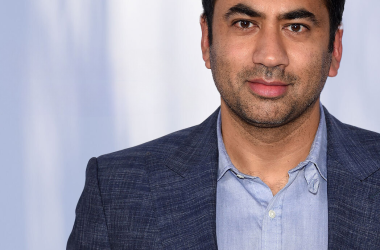Washington, D.C.-(ENEWSPF)-June 13, 2009. We have the most expensive health care system in the world, but do not get the best results. The rising costs of health care are a burden on our families and a drain on our long-term economic growth. If we continue on the course we are on, health care expenditures will reach 20 percent of GDP within a decade. Rapidly rising health care costs are leading our nation down a fiscally unsustainable path.
For the health of the American people and the health of our economy, we must act now to bring down health care costs and reform the health care system. It is central to the long-term prosperity of the United States. That is why the President is committed to passing health care reform this year. Guided by the principle that we should fix what’s broken and build on what already works, the President wants to pass health care reform that allows one to keep their health insurance and choose their health care providers, expands coverage to the millions without, and brings down the cost of coverage.
The President is committed to undertaking reform that is completely paid for and deficit neutral over the next decade. That is why he put forward in his FY 2010 Budget an historic $635 billion down payment on reform. Roughly half of this amount comes from revenue proposals, including limiting the value of itemized deductions for families making over a quarter-million dollars a year to the rates they were during the Reagan years, and about half comes from savings from Medicare and Medicaid.
Since making this proposal, the Administration has worked with Congress on other ways to offset fully the cost of health care reform through additional savings and revenues. To that end, the Administration is detailing today savings proposals that will contribute another $313 billion over 10 years to paying for health care reform, bringing the total scoreable offsets put forward by the Administration to nearly $950 billion over 10 years. Together, this would extend the solvency of Medicare’s Hospital Insurance Trust Fund by seven years to about 2024, and reduce beneficiary premiums for physician and outpatient services by about $43 billion over the next 10 years. The Administration hopes these suggestions will help Congress as it continues to draft legislation, and remains open to any other proposals to pay for reform that Congress may put forward.
|
Source |
Health Care Reserve Fund ($ in billions) |
|
10 years |
|
|
FY 2010 Budget – Medicare and Medicaid Savings – Revenues |
$635 $309 $326 |
|
Additional Medicare and Medicaid Savings – Incorporate productivity adjustments into Medicare payment – Pay better prices for Medicare Part D drugs – Other |
$313 $110
$22 |
|
Total |
$948 |
Reforming the health care system does not end at expanding coverage and making sure that it is paid for; we also must address the underlying problems in our health care system that impede quality improvements and raise costs. The President therefore believes that in addition to scoreable offsets, we must take steps to transform the health care system, such as investing in health care information technology, patient-centered quality research, prevention and wellness, and in creating a system that pays providers for providing better care not just more care. Over time, these steps will help to produce a health care system that works better and costs less.
Paying for Health Care Reform: New Savings
As was emphasized when the President’s Budget was initially released, the reserve fund represents a substantial down payment but is not by itself sufficient to fully fund comprehensive reform. The President has insisted that reform must be deficit-neutral based on real savings and revenue estimates as determined by impartial scorers. Thus, in addition to the proposals included in the FY 2010 Budget, the Administration is putting forward policy options to further rein in federal health spending, make the system more efficient, and deliver better quality of care. When combined with the Budget proposals, these new options would extend the solvency of Medicare’s Hospital Insurance Trust Fund by seven years to about 2024. These new savings include:
- Incorporate productivity adjustments into Medicare payment updates. Productivity in the U.S. economy has been improving over time. However, most Medicare payments have not been systematically adjusted to reflect these system-wide improvements. We should permanently adjust most annual Medicare payment updates by half of the economy-wide productivity factor estimated by the Bureau of Labor Statistics. This adjustment will encourage greater efficiency in health care provision, while more accurately aligning Medicare payments with provider costs.
- Reduce subsidies to hospitals for treating the uninsured as coverage increases. Instead of paying hospitals to treat patients without health insurance, we should give people coverage so that they have insurance to begin with. As health reform phases in, the number of uninsured will go down, and we would be able to reduce payments to hospitals for treating those previously uncovered. This would be done by establishing a new mandatory mechanism to better target payments to hospitals for unreimbursed care remaining after coverage increases. Beginning in FY 2013, payments would be gradually phased down so that by 2019, funding would equal 25 percent of Medicare/Medicaid Disproportionate Share Hospitals (DSH) funding in 2013, and updated by inflation.
- Pay better prices for Medicare Part D drugs. In its meeting with the President and subsequent communication, the pharmaceutical industry has committed itself to helping to control the rate of growth in health care spending. There are a variety of ways to achieve this goal. For example, drug reimbursement could be reduced for beneficiaries dually eligible for Medicare and Medicaid. The Administration is working with the Congress to develop the most appropriate policy to achieve these savings.
Other Savings
- Adjust payment rates for physician imaging services to better reflect actual usage. To provide more accurate payment for physician imaging services, the Department of Health and Human Services would increase the equipment utilization factor for advanced imaging (such as magnetic resonance imaging (MRI) and computed tomography (CT) machines) from 50 percent to 95 percent. This proposal – which is closely aligned with a Medicare Payment Advisory Commission (MedPAC) recommendation – would better reflect how these technologies are actually used.
- Adopt MedPAC’s recommendations for 2010 payments to skilled nursing facilities, inpatient rehabilitation facilities, and long-term care hospitals. To bring down costs and maintain quality, we shouldupdate payments based on MedPAC’s consideration of multiple variables, such as quality, access to care, and adequacy of payment. Doing so would implement MedPAC’s 2010 payment recommendations for skilled nursing facilities, inpatient rehabilitation facilities, and long-term care hospitals.
- Cut waste, fraud, and abuse. It is important that patients get the best care, not just more care. Unnecessary treatments are not only expensive, but also can harm the health of the patient. To discourage physicians from ordering unnecessary or excessive treatment, we should increase the scrutiny of physicians in high-risk areas or those that order a high volume of high-risk services (such as home health, durable medical equipment, and home infusion therapy) through additional pre-payment review.
Paying for Health Care Reform: 2010 Budget Proposals
The above savings would be in addition to the down payment for comprehensive health care reform of $635 billion over 10 years detailed in the FY 2010 Budget. The reserve fund is financed roughly half through proposals to generate more revenue, and half through efficiencies and savings from Medicare and Medicaid. Based on our projections, the Medicare proposals contained in the reserve fund would extend the solvency date of the Hospital Insurance (HI) Trust Fund by two years and reduce beneficiary premiums for physician and outpatient services by about $33 billion over the next 10 years. As a result of these proposals, Medicare beneficiaries will also see an improvement in the quality of their services. The reserve fund includes a broad array of savings proposals including:
- Reducing Medicare overpayments to private insurers. The establishment of a competitive system where payments are based upon an average of plans’ bids submitted to Medicare would save taxpayers close to $177 billion over 10 years, as well as reduce Part B premiums.
- Improving Medicare and Medicaid payment accuracy. By strengthening program integrity efforts, the Centers for Medicare and Medicaid Services (CMS) will address vulnerabilities that have led to billions of dollars in overpayments and fraud each year.
- Improving care after hospitalizations and reducing readmission rates. A combination of incentive payments and penalties should lead to better care and result in fewer readmissions – saving roughly $25 billion over 10 years.
- Expanding the Hospital Quality Improvement Program: By linking a portion of Medicare payments for acute in-patient hospital services to hospitals’ performance on specific quality measures, quality of care for beneficiaries will improve, and Medicare will save approximately $12 billion over 10 years.
Source: whitehouse.gov








